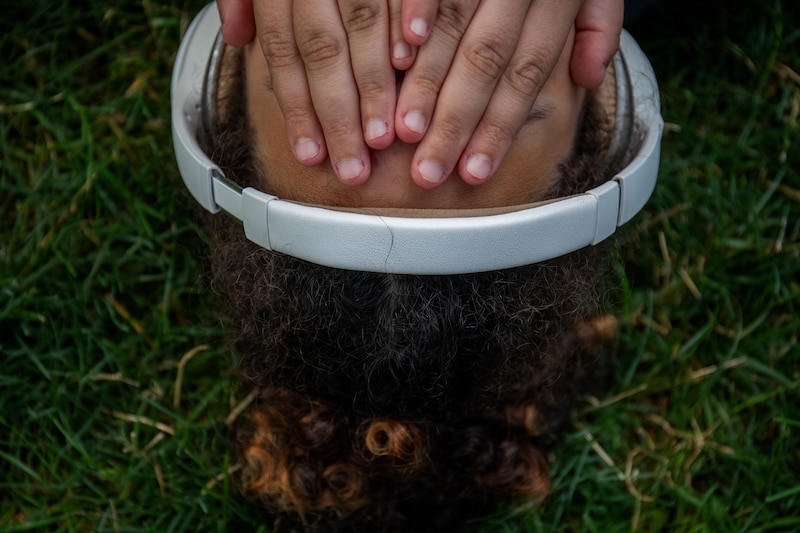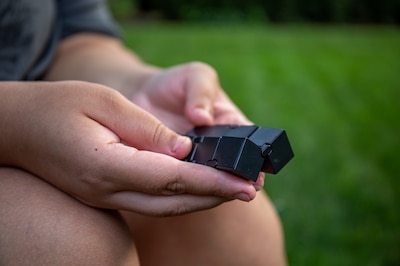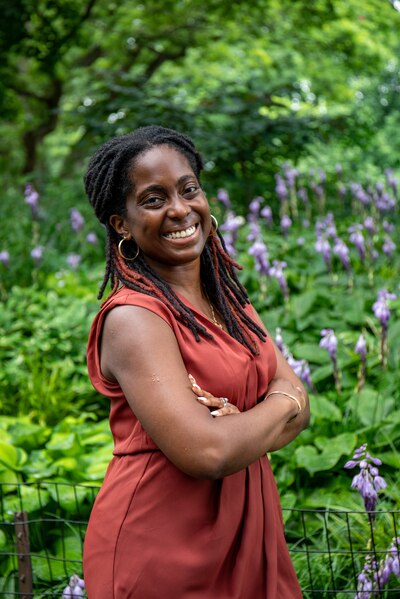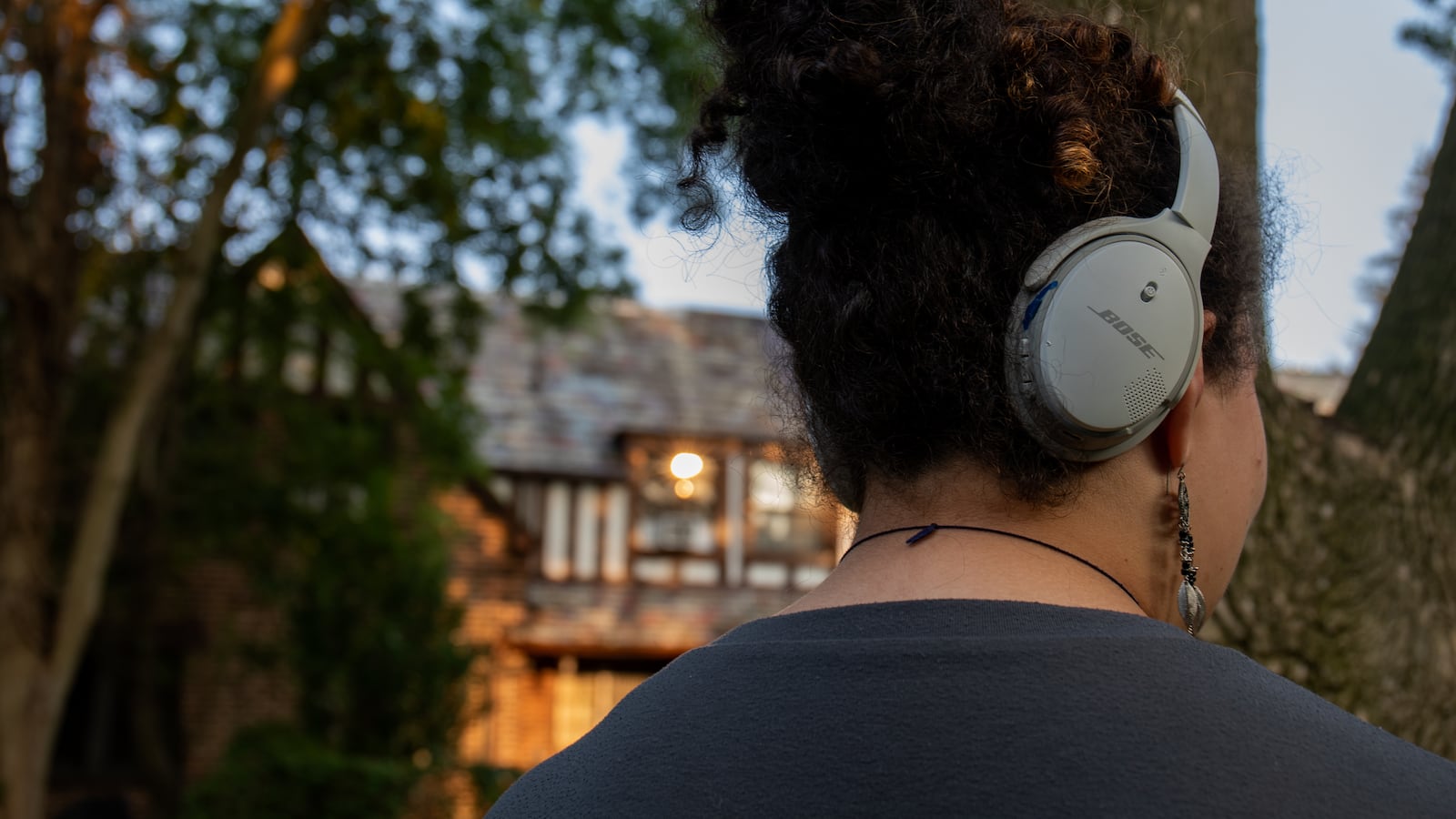Sign up for Chalkbeat New York’s free daily newsletter to keep up with NYC’s public schools.
Catherine had watched for years as her once high-achieving son’s relationship with school deteriorated.
Michael’s depression, anxiety, and ADHD made the transition to high school painful. Then the pandemic hit, and he spent his sophomore year at home in pajamas.
When schools fully reopened his junior year, Michael refused to return, and he was later hospitalized for attempting suicide. After that alarming episode, a psychiatrist gave Catherine pointed advice: drive your son to his Queens school every day, even just to see the building, or he may never go back.
“It scared me,” said Catherine.
Despite her son’s resistance, she made Michael get into their beat-up Hyundai Sonata and drive the 2.5 miles past the campus nearly every day for weeks. Eventually, he was able to step inside the school building and attend for longer stretches during summer school, with its less demanding schedule.
Then, remarkably, he returned full time for senior year.
Michael played chess with new friends. He went on the senior trip to a camp in Connecticut. He went to prom. While his attendance wasn’t perfect, he was a full-fledged member of the senior class, a development his mom credits to sticking with therapy and medications and eventually getting the accommodations he needed from his school.
In a moment that once felt next to impossible, Michael got his diploma last month and will head to community college in the fall. (Names in this story have been changed to middle names or pseudonyms to protect students’ privacy.)
Several families like Michael’s who overcame serious aversions to attending class — often referred to as school refusal — and made it to graduation told Chalkbeat they had to be determined and vigilant, navigating school mental health systems that are struggling to address worsening student needs since the pandemic without enough resources or updated guidance to meet this unprecedented moment.
Even before the pandemic, about 2 to 5% of children nationwide avoided school. Now, several social workers told Chalkbeat they are dealing with more extreme cases of school refusal than ever before, fueled in part by an alarming rise in suicidal ideation among city teens and contributing to a chronic absenteeism rate in New York City that hit 41% in the 2021-22 school year.
The consequences of missing so much school can be devastating. One longitudinal study estimated that a quarter of students who were chronically absent — defined as missing at least 10% of days — ultimately dropped out.
Meanwhile, the youth mental health system is bending under the pressure, with a shortage of hospital beds for youth in crisis and waitlists for therapists, especially for Medicaid patients, that are monthslong.
This means families rely on schools even more. But New York City’s school social workers and guidance counselors are often strained, with an average of one social worker per 456 students and one guidance counselor per 277 students, according to an analysis. National guidance recommends one school counselor and one social worker for every 250 students. For children with more extreme needs, the recommended ratio is one social worker to 50 students.
Balancing high caseloads and sometimes multiple schools make it hard to follow time-consuming best practices to treat school refusal, such as individualized transition plans with gradual exposure to school. And schools may miss early warning signs altogether.
Several social workers also told Chalkbeat that they do not have dedicated supervisors to regularly advise them on difficult cases, a common practice in clinical settings that could help prevent burnout, especially for newly minted staffers.
“I always go to a trusted colleague to run through a case during a time of crisis, just to bounce ideas off of,” said Dr. Jessica Chock-Goldman, a social worker at Bard Early College High School in Manhattan and adjunct professor at New York University’s Silver School of Social Work. “If students who are newly out of their masters program, and do not have the training and background in how to properly assess a child for suicidal ideation or any high risk cases, how can we put full trust in this clinician?”

Education Department officials confirmed that social workers have no direct supervisors, but said they have access to teams outside of their school in the superintendent and central offices for additional support. Central staffers host office hours with small groups and case conferencing sessions to discuss best practices and challenging cases, officials said, but they declined to provide how often these are held.
Officials also point out that every school has access to a mental health professional — though the fate of 500 social workers hired with federal relief dollars remains a question after that money dries up next year. Schools are focusing on breathing and mindfulness, and the health department plans to roll out teletherapy for high school students this year.
“We’re also working to improve attendance across our school system and ensure that every single student feels safe, seen, and welcomed every day in their school buildings and communities, and engaged in their classroom learning,” education department spokesperson Jenna Lyle said in an email.
In more than a decade working in schools, Chock-Goldman said she’s never seen the level of student need that she has in the past two years, and she’s worried schools are unprepared. “Kids spend more waking hours at school than any other place,” she said. “We’re the ones doing the work.”
Schools lack training to work with intense needs, some say
Michael’s freshman year guidance counselor was “well-intentioned,” but had little training or experience with school refusal, said his mom, a social worker herself. He started to avoid school that first year of high school, months before the pandemic, and exhibited signs that went unnoticed in elementary school.
His family transferred him in the middle of freshman year to a smaller Queens high school with a strong advisory program. Soon after, classes went remote, and Michael’s mental health spiraled. During his junior year, after Michael spent about a week in the hospital, the school social worker tried to connect the family with a day treatment program. Waitlists were too long.
His family considered various out-of-school learning options, such as a hybrid online and in-person model called Fusion and therapeutic boarding school. They also considered Mount Sinai’s Comprehensive Adolescent Rehabilitation and Education Service, known as CARES, which is a therapy-based school serving teens with severe emotional challenges. Because that program is an alternative school in the city’s District 79, kids earn class credits.
But the number of applicants to CARES, which serves about 50 teens, is often nearly as big as the program itself, said Dr. Kelly Mule, a psychologist at CARES and assistant professor of psychiatry at Mount Sinai’s Icahn School of Medicine.
Michael didn’t want to attend any of these programs. He wanted to return to his Queens high school, but he didn’t know how.
By May of his junior year, as he took classes at home as part of the city’s program for students with medical conditions, Michael was able to walk inside the school building. He could sit with the social worker and work on Google classroom assignments, but he couldn’t make himself walk into the classrooms. He felt too awkward when people asked where he had been, Catherine said.
“Some of the teachers made comments, ‘I don’t even know this kid. Who is this kid?’” she recounted.
At CARES, for instance, teachers are trained on how to respond to kids after prolonged absences and follow their lead on workload, often in partnership with a child’s therapist, Mule said. While time-consuming and not foolproof, these strategies can shorten future absences.
But these best practices are often passed down by more experienced colleagues, she explained. That’s why in clinical settings, staffers with a licensed master of social work, have supervisors they meet with weekly to discuss cases — a resource missing for school social workers. To Mule’s surprise, she has met veteran school social workers who weren’t aware of city-funded programs for youth, such as Children’s Single Point of Access, a centralized system for finding mental health services.
“You can’t expect social workers to sustain their work with no supervision,” Mule said. “They need a seasoned supervisor who can connect them to resources that they have vetted and know work for a specific set of symptoms or needs.”
Mental health approaches can be uneven, even within schools
This past year at Manhattan’s High School for Environmental Studies, 17-year-old Myka was required to attend a guidance counselor’s lecture about suicide prevention and awareness. Myka, who was hospitalized for suicidal ideation in December 2020, the middle of sophomore year, thought making the lecture mandatory was “hilarious” and found the counselor’s delivery cringe-worthy.

When schools went remote for the pandemic, Myka, who identifies as nonbinary, stopped attending classes online and barely left their room because “it didn’t make sense in my brain to do school at home,” they said. Instead of going back to their Queens high school, they spent several months at a wilderness program in Georgia, and then completed junior year in a residential therapeutic program in Utah.
But come senior year, they felt ready to return to New York City. Though they still suffered from social anxiety, depression, and ADHD symptoms, they had more coping skills and a stronger sense of self-advocacy through therapy and self work. That’s why the counselor’s lecture came as a shock.
“She said that telling someone ‘You’re being selfish’ when they tell you they’ve thought of hurting or seriously harming themselves was an okay way to respond,” Myka said. “It just wasn’t the message that should have been sent, and was a bit of a red flag in my book.”
The school social worker, on the other hand, was a source of comfort, helping figure out which accommodations on their special education plan were needed — and which weren’t. (The school’s principal declined to comment, directing questions to the Education Department.)
Myka didn’t, for instance, need classes with two teachers, a requirement that would have prevented them from taking most of their courses, including their favorite course: AP psychology.
Other accommodations were lifesavers. Myka took breaks during class to walk around or go to the social worker’s office. They were also allowed fidget toys in class, extensions on some assignments, extra time on tests, and specific instructions breaking down big projects into more manageable tasks. And their social worker brokered a meeting with Myka’s English teacher to allow headphones to cancel out class noise, as long as no music was playing.
“I do feel as though I am able to advocate for myself and feel heard, which is something I have received a lot of positive feedback about,” Myka said.
Myka will soon head to a dorm four hours away at SUNY Oneonta, where they plan to study psychology in hopes of becoming a therapist or social worker — inspired by their own experience in mental health treatment centers.

Myka’s success story illustrates the difference a great school professional can make, what KIPP charter school social worker Krystal Folk tries to accomplish with her Bronx students.
As a young Black girl growing up in Brooklyn, Folk herself felt like it wasn’t culturally acceptable to get therapy, a mindset she’s trying to change through her own work.
“In our community it’s taken a long time to accept that we need mental health services,” she said. That’s why she considers it extra important that she disclose to her students her own depression and anxiety.
“They say, ‘No Ms. Folk, you’re fine.’ I tell them, ‘I’m clinically diagnosed,’” she said. “I think normalizing that we have feelings and anxieties is important. As corny and cheesy as it sounds, I try to be the person I wish I had at their age.”
Services beyond schools are still needed
For some students, school doesn’t offer the services they need. But after getting help elsewhere, they are driven to return by a passion for learning.
That was the case with Emma, whose mother, Beth, turned to a private therapist for her daughter’s ADHD, extreme anxiety, and suicidal ideation that led to school refusal. Emma attended the famed LaGuardia High School of Music & Art and Performing Arts, where there is one social worker for about 900 students, and one counselor for every 200 kids, according to an analysis. The school’s on-site mental health clinic closed during the pandemic, families said. (The school’s acting principal did not respond for comment.)
Beth credits her daughter’s return to school to dialectical behavior therapy, or DBT, which helps patients learn to confront and change unhealthy behaviors. Emma first had access to the “life changing” therapy in her after-care program following hospitalization when she was a sophomore.
But another factor in her recovery was her drive to succeed at LaGuardia and her love of the school’s drama classes, which drew her to school even as dark times returned junior year, when fights with friends on social media followed her into the classroom.
“She considered pulling out of school,” Beth said. “But she didn’t want to give up on LaGuardia. She just put one foot in front of the other.” Being in the drama program remained a big pull: “To be able to spend half of your day working on your art, whatever your art is, the joy of that never diminished,” her mom said.
Emma is now planning to attend college in upstate New York and hopes to become a director or art designer, said Beth.
Echoing other parents of students who suffered from school refusal, Beth said, “We are cautiously optimistic.”
If you or someone you know is considering self-harm, please dial 988 for the National Suicide & Crisis Lifeline.
Amy Zimmer is the bureau chief for Chalkbeat New York. Contact Amy at azimmer@chalkbeat.org.

